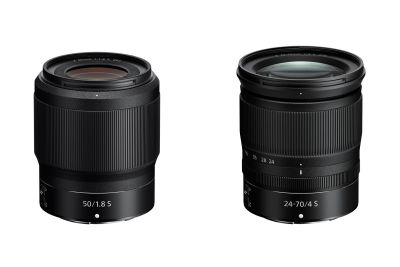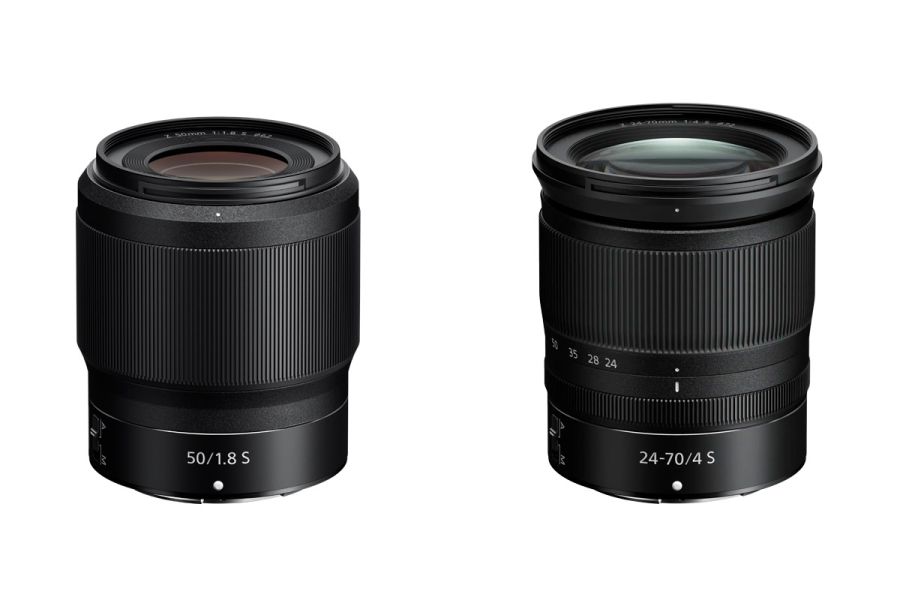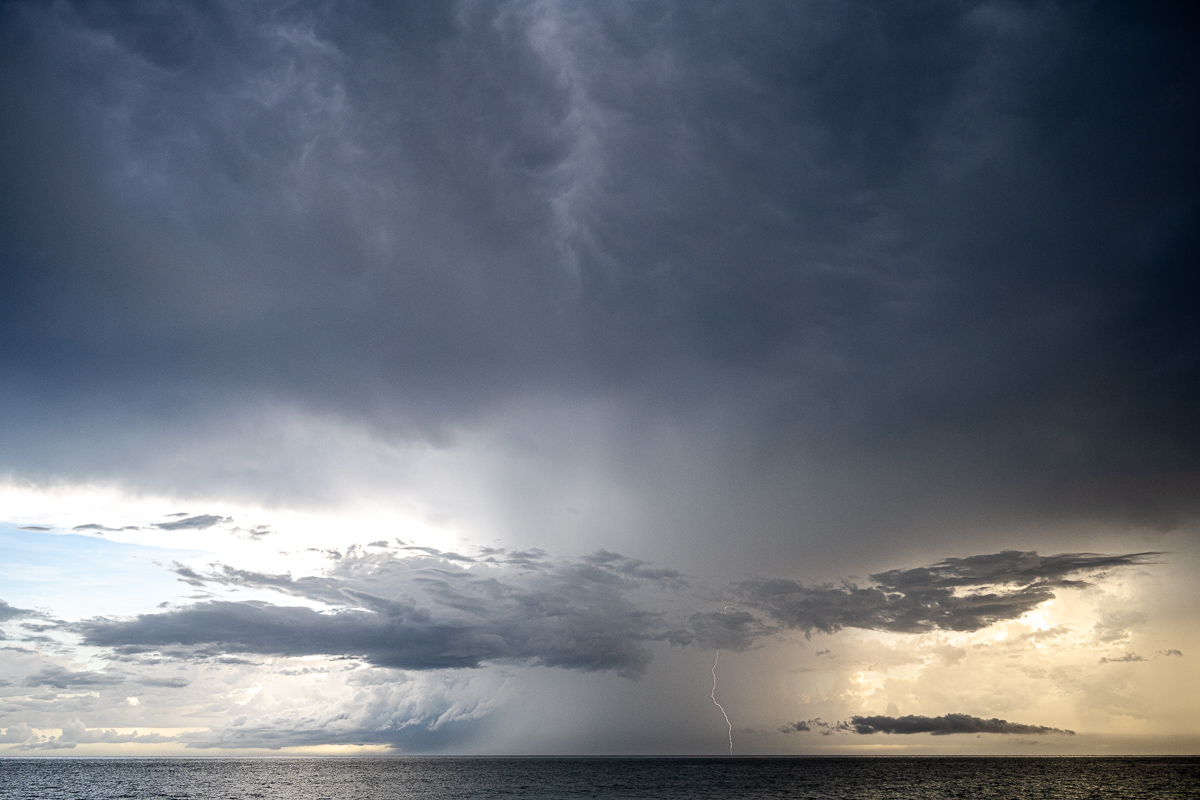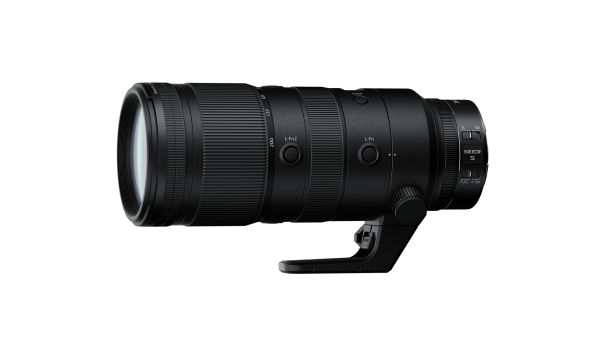

Nikon Z 50mm vs 24-70mm: Which Lens Should You Choose?
Should you go for a 50mm prime or a 24-70mm zoom on a Nikon Z-mount camera? This article offers a full, field-tested comparison to help photographers make informed choices. Image quality, bokeh, weight, travel use—follow the guide.
Summary
- Quick comparison
- From the 50mm to modern zooms
- Standard prime lenses: 50mm and alternatives
- 50mm f/1.4 vs f/1.8: Brightness vs performance
- The race for wider apertures comes at a cost
- Bokeh: what really changes
- Trans-standard zooms: 24-70mm and beyond
- Standard zoom lenses
- How to choose
- Choosing based on context
- The smart choice: second-hand 24-70mm f/4
- Choosing based on use cases
- Decision tree
- Other alternatives to consider
- FAQ
- Glossary
Quick Comparison
This article compares several Nikon Z-mount lenses based on practical experience. While the full breakdown comes later, here’s a quick overview to help guide your choice:
- 50mm f/1.8 S - Affordable, sharp, and compact prime with smooth bokeh.
- 24-70mm f/4 S - Light, versatile zoom ideal for travel and street photography.
- 24-70mm f/2.8 S - Professional workhorse lens, heavier but brighter.
- 24-120mm f/4 S - The best all-rounder for one-lens setups, especially for travel.
From the 50mm to modern zooms
For a long time, the default standard lens for reflex cameras was the 50mm. It was a simple, inexpensive prime—usually f/1.8 or f/2—used by most amateur photographers. It was often their only lens, and for many, the starting point for learning to frame and compose. This "normal" focal length, close to the human eye’s perspective, was even a favorite of Henri Cartier-Bresson.
Today, with evolving gear and shooting styles, the 50mm is often challenged by trans-standard zooms offering much more versatility. This article shares my personal experience as a user, based on Nikon Z-mount full-frame cameras (FX, 24×36 equivalent). If you're on F-mount or another brand, adapt accordingly.
I’m not talking about resolution tests or MTF[1] charts. What matters here is real-world use—weight, flexibility, handling, and what each lens allows in practice.
Standard prime lenses: 50mm and alternatives
Nikon offers several variations around the 50mm focal length in Z-mount:
| Focal length | Max. aperture | Min. focus | Filter diameter | Length | Weight |
|---|---|---|---|---|---|
| 50mm f/1.8 S | f/1.8 | 0.40 m | 62mm | 86mm | 415 g |
| 50mm f/1.4 | f/1.4 | 0.37 m | 62mm | 86.5mm | 420 g |
| 50mm f/1.2 S | f/1.2 | 0.45 m | 82mm | 150mm | 1090 g |
| MC 50mm f/2.8 | f/2.8 | 0.16 m | 46mm | 66mm | 260 g |
| 58mm f/0.95 S Noct | f/0.95 | 0.50 m | 82mm | 153mm | 2000 g |
The 50mm f/1.8 S typically sells used around €400. If you use a basic kit zoom with limited brightness, this 50mm may become your brightest lens, useful for portraits, low light, or creative depth of field. It’s a solid, compact, reliable complement.
I personally prefer the Nikon Nikkor 35mm f/1.8 S for its versatility. That said, I used the 50mm f/1.8 for several months to digitize negatives and slides before switching to the Nikon Nikkor MC 50mm f/2.8 macro, which is lighter, closer-focusing, and better suited for that task.
50mm f/1.4 vs f/1.8: Brightness vs quality
The 50mm f/1.4 is 2/3 EV[2] brighter than the f/1.8 S. On paper, that means more light, more bokeh, and better low-light performance. But modern sensors handle high ISOs very well, and in real-world use, that 2/3 EV gap rarely affects visible noise or dynamic range.
Meanwhile, the f/1.8 S belongs to the S-Line range—meaning better optics, fewer aberrations, sharper images, and more robust construction. The newer 50mm f/1.4 is not an S-Line lens, which raises questions about Nikon’s product strategy.
So the question becomes: is 2/3 EV worth it, when the weight, sharpness, and price favor the f/1.8? Everyone must decide for themselves. But today, when ISO 3200 or 6400 are usable, the real difference lies elsewhere—say, between a 24-200 f/6.3 and a 50mm f/1.8, where you gain 3 to 4 EV[2].
The race for wider apertures comes at a cost
Beyond weight and size differences, choosing a very fast lens like a 50mm f/1.2 means you'll want to shoot wide open to make the most of it. While it creates a smoother background blur (bokeh), it can also result in parts of your subject being out of focus if the depth of field is too shallow.
Here is a table comparing the depth of field at different subject distances:
| Subject distance | f/1.2 | f/1.4 | f/1.8 |
|---|---|---|---|
| 0.5 m | 0.6 cm | 0.8 cm | 1.0 cm |
| 1 m | 2.7 cm | 3.2 cm | 4.1 cm |
| 2 m | 11.2 cm | 13.1 cm | 16.9 cm |
| 3 m | 25.5 cm | 29.8 cm | 38.3 cm |
| 5 m | 71.6 cm | 83.7 cm | 108.0 cm |
What about bokeh?
If you care about how backgrounds blur, there are clear differences between 50mm f/0.95, f/1.2, f/1.4, and f/1.8. The Noct f/0.95 delivers a dreamy, shallow depth of field but is huge, manual focus only, and not practical for everyday use. The f/1.2 S has a smoother bokeh but is also very heavy and expensive. The f/1.4 is punchier but slightly busier in some settings. The f/1.8 S delivers pleasant, smooth blur for its weight and price.
But this article isn’t about comparing pro-level monsters with everyday lenses—it’s about helping you decide whether a bright 50mm prime or a practical zoom is better suited to your needs and style.
Trans-standard zooms: 24-70mm and beyond
If you’re using an ultra wide-angle like the 14-30mm or 14-24mm, and a telephoto like the 70-180mm or 70-200mm, a 50mm prime fills the gap for mid-range shots. But for many photographers, a 24-70mm zoom can do that, and much more.
Here's a comparative table of Nikon’s zooms starting at 24mm:
Standard Zoom Lenses
| Focal Length | Max Aperture | Min. Focus Distance | Filter Thread | Length | Weight |
|---|---|---|---|---|---|
| 24-50mm f/4-6.3 | f/4-6.3 | 0.35 m | 52mm | 51mm | 195 g |
| 24-70mm f/4 S | f/4 | 0.30 m | 72mm | 88mm | 500 g |
| 24-70mm f/2.8 S | f/2.8 | 0.38 m | 82mm | 126mm | 805 g |
| 24-70mm f/2.8 S II | f/2.8 | 0.24-0.33 m | 77mm | 142mm | 675 g |
| 24-120mm f/4 S | f/4 | 0.35 m | 77mm | 118mm | 630 g |
| 24-200mm f/4-6.3 | f/4-6.3 | 0.50 m | 67mm | 114mm | 570 g |
Note: the 28-75mm f/2.8 and the 28-135mm PZ are not included here. The first is excluded because this comparison focuses on zooms starting at 24mm. The second is more video-oriented, and therefore not directly comparable to stills-focused photo lenses.
The 24-70mm f/2.8 S is the go-to pro zoom for photojournalists, often paired with a 70-200mm f/2.8 on a second body. It’s rugged and fast, but heavy. The newly announced version II is lighter and adopts a more standard 77mm filter size, a welcome change.
How to choose
If you mostly shoot portraits, low-light, or artistic images and want maximum aperture and bokeh in a lightweight kit, a 50mm prime makes sense.
If you do street, travel, architecture, events, or general photography, and need flexibility, the 24-120mm f/4 S is an excellent all-rounder, especially with stabilization.
Choosing based on context
Unlike Ansel Adams, who traveled with a van full of gear and carefully selected the best format and lens for each scene, most of us deal with limited bags, tighter budgets, and aging backs. Choosing the right tool depends on where you go, how you shoot, and what you carry.
On urban strolls with one body, I might opt for the MC 50mm f/2.8 macro for its lightness and sharpness. In humid or windy coastal settings, I prefer the 24-120mm—less lens swapping, more sealed build, and extended reach.

Thunderstorm in Trinidad del Mar, Cuba - Photo : © Sebastien Desnoulez - Nikon 24-120mm f/4 S
THE SMART CHOICE: SECOND-HAND 24-70MM F/4
If you’re looking for a standard zoom without spending too much, because you only use this range occasionally, the NIKKOR Z 24-70mm f/4 S is an excellent choice.
Sturdy, compact, and well-corrected, it belongs to Nikon’s S-Line, which guarantees solid construction, high-end coatings (nano crystal, fluorine, etc.), and consistent rendering with other S-Line lenses. It also features a serious internal build: 14 elements in 11 groups, including 1 ED element, 1 ED aspherical element, 3 aspherical lenses, plus nano crystal and fluorine coatings.
It’s often available used for around €400, because it was widely sold in kits with Z bodies and many users later upgraded to brighter or more versatile models.
Of course, it doesn’t offer the same background blur as the f/2.8 versions, nor the extended range of a 24-120mm, and some reviews point to a slight drop in sharpness at 70mm edges. Still, it’s more than enough for everyday use in landscape, travel, urban, or documentary photography. A great value for anyone who wants an S-Line zoom that won’t weigh down your bag, or your wallet.
Choosing Based on Use Cases
- Portrait and indoor photography: the 50mm f/1.8 offers brightness and background blur.
- Travel and street photography: the 24-70 f/4 provides great framing flexibility.
- Event or professional use: the 24-70 f/2.8 ensures performance and reliability.
Decision Tree
- You want strong low-light performance and blur → 50mm f/1.8 S.
- You want a lightweight all-rounder lens → 24-70mm f/4 S.
- You shoot indoors or work as a reporter → 24-70mm f/2.8 S.
Other Alternatives to Consider
- NIKKOR Z 24-120mm f/4 S: more versatile, one travel zoom to rule them all.
- NIKKOR Z 35mm f/1.8 S: more dynamic for street scenes or wide-angle shots.
FAQ
Is the 24-70 f/4 sharp enough for landscape photography?
Yes, especially between f/5.6 and f/8. For low light or portraits, the 50mm f/1.8 still has the edge.
Is the 50mm f/1.8 worth it if I already own a 24-200?
Yes, it gives you 3 to 4 extra stops, better subject separation, and much better low-light performance.
About the Author
Sebastien Desnoulez is a professional photographer specializing in architecture, landscape, and travel photography. Trained in the 1980s, he first covered Formula 1 racing and international photo assignments before focusing on fine art photography that blends composition, light, and emotion. He also shares his technical expertise through practical articles aimed at serious photographers, especially those using Nikon Z lenses and hybrid digital workflows.
Glossary
1. MTF (Modulation Transfer Function): this is a way of measuring how well a lens can reproduce fine detail and contrast across the frame. On most charts, the horizontal axis shows the distance from the image centre to the edges, while the vertical axis (from 0 to 1) represents contrast. Several curves are plotted for different spatial frequencies, often 10 and 30 lines per millimetre, and for two directions in the image (sagittal and meridional). As a rule of thumb, the higher and straighter the lines are, the better the lens maintains contrast and resolution, but an MTF chart only tells part of the story and does not account for all aspects of rendering such as colour, flare or bokeh.
2. EV / IL (Exposure Value / Indice de Lumination): EV (or IL in French) is a unit that combines aperture, shutter speed, and ISO sensitivity to define exposure. A 1 EV change is equivalent to one "stop", meaning a doubling or halving of the light hitting the sensor, for example, changing aperture from f/4 to f/5.6 or shutter speed from 1/125s to 1/60s.
Tags
I am represented by the gallery
Une image pour rêver


